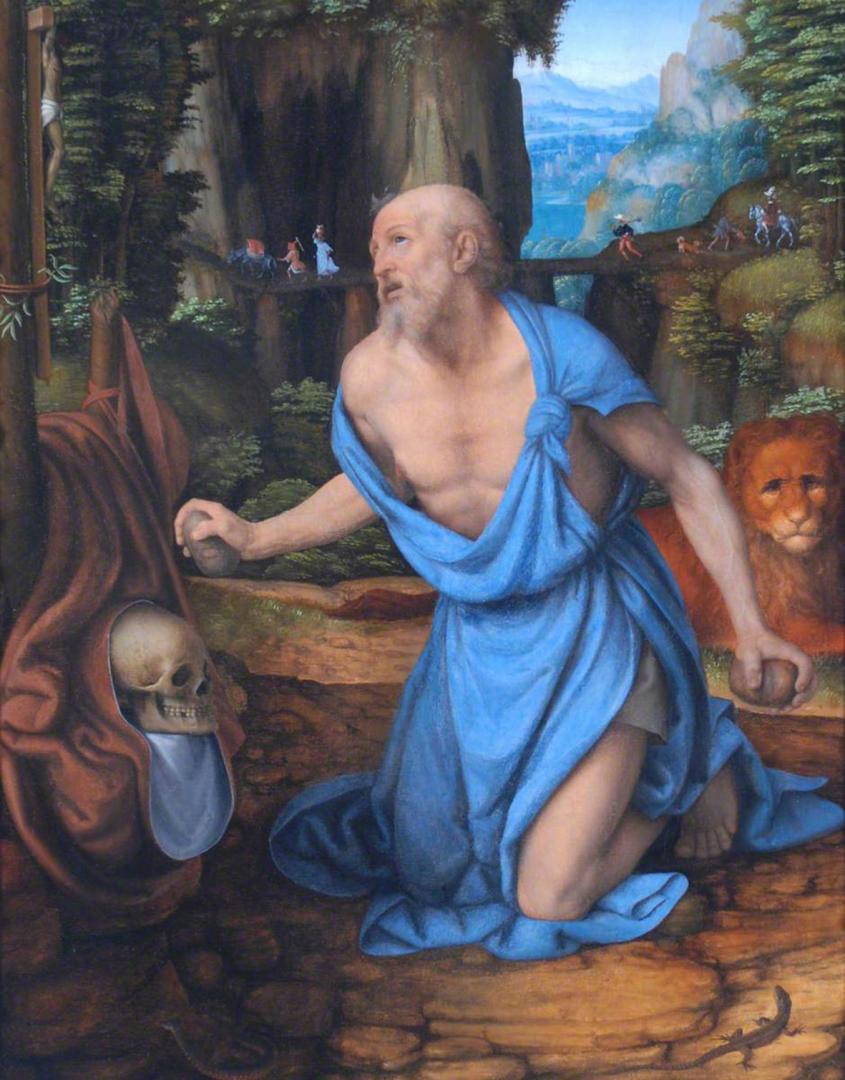In the latest of her regular columns, Dorothy Blundell takes a sideways look at the collections of The Bowes Museum where she is a volunteer
LONG before he met Josephine, John Bowes was buying paintings. In 1830, aged 19, he made a brief Grand Tour of the continent and acquired his first painting, the Temptation of St Anthony. By 1844 he had bought 57 artworks, ranging from Italian pre-Renaissance to Dutch 17th century, as well as some 15th century art.
One of his purchases of 1841, and displayed in the religious picture gallery in The Bowes Museum, is St Jerome in the Wilderness, by Andrea Solario, one of the most talented pupils of the great Leonardo da Vinci.
The master would have instilled into his pupil the importance of attention to detail and Solario clearly paid attention.
In the background of the painting is a series of small figures painted with great precision and giving a satisfying sense of perspective.
It is thought that Solario joined Leonardo’s studio around the mid-1490s, which meant he was there when Leonardo worked on the Last Supper fresco in the Santa Maria delle Grazie.
Not only was Solario an attentive student, he also acted as an emissary between Leonardo and the French royal court.
And his reward? In 1507 Solario was chosen as the lead artist, under Leonardo’s supervision, to paint the very first copy of the Last Supper, on canvas, for Louis XII, King of France.
Before we leave this painting, a word about St Jerome. From about 374 AD St Jerome spent several years among the hermits in the Syrian desert.
He was said to have tamed a lion by removing a thorn from its paw. He is often shown as a cardinal (his outer red robe and red hat are on a tree on the left) because he was an advisor to the Pope (St Damasus I) even though the office of cardinal did not exist in Jerome’s lifetime (about 342-347 to 420).
Which brings us to Cardinal Pietro Ottoboni.
A three-quarter length portrait painted around 1689 by Francesco Trevisani was bought by John Bowes while in northern Italy in the autumn of 1874.
According to Charles Hardy, his biographer, Bowes at this time was mentally and physically depressed after the death of Josephine in February and then toiling all summer in the solitary labour of packing up and arranging transport for the collection.
Yet, Bowes could not resist this bargain for 1,500 lire (£60). Or, who knows, perhaps he bought it because he thought Josephine would have liked it?
The painting shows Ottoboni in the traditional scarlet vestments of watered-silk with white rochet or surplice with a deep lace flounce.
The robe is probably the only thing Jerome and Ottoboni have in common. Where Jerome would beat himself with a rock by way of purification, Ottoboni was an unashamed seeker of sensual pleasures who spent lavishly on banquets, celebrations of religious holidays and on the arts.
To be fair, Ottoboni, who was born into a noble Venetian family, was also said to be kind, charitable and ready to serve.
He was the last Cardinal-nephew when tradition allowed the Pope to appoint members of his own family to key positions. He was also vice-chancellor of the Holy Church of Rome, which gave him an annual income of about £5m in today’s value.
He restored his official residence, Palazzo della Cancelleria, to include an enlarged and improved theatre, making it one of the most technically advanced opera venues in Rome.
Works by many leading composers were premiered there. Ottoboni even wrote texts of cantatas and librettos – a possible reference to the paper he is holding in his portrait – but his church position meant he could not publish them under his own name.
Musicians who had him to thank for their advancing their careers included Arcangelo Corelli, German-born British composer George Frideric Handel and fellow Venetians, Antonio Vivaldi and Tomaso Albinoni.
Ottoboni lived a licentious lifestyle and decorated his bedroom with portraits of his many mistresses as saints.
He reportedly fathered between 60 and 70 children. Despite all this – what might be termed sinful behaviour – he might have been elevated to pontiff in 1740, but he developed a fever during the conclave and died on February 29, aged 73.
He left behind huge debts, but he also left behind a legacy of improvements in the arts. So, maybe not all bad?
The museum is currently closed, but you can explore the collection online – see thebowesmuseum.org.uk






